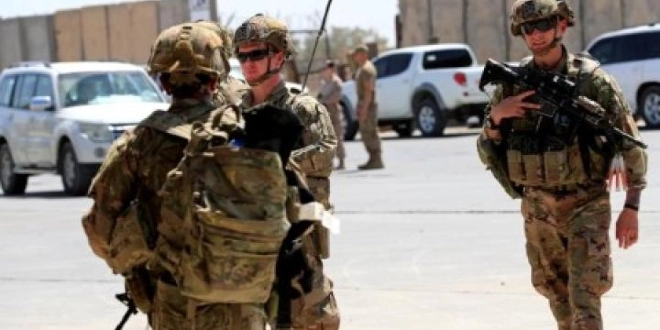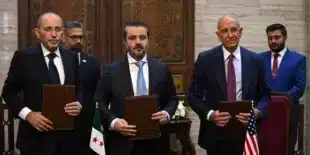The United States and Iraq are set to initiate discussions aimed at concluding the mission of the U.S.-led coalition that was established to combat the Islamic State group in Iraq. The Pentagon has indicated that the size of the U.S. military presence in Iraq will be a topic of discussion in these talks.
This decision comes amid increasing attacks on U.S. forces in Iraq by Iran-backed militias. However, the U.S. asserts that the decision to hold these talks, which were initially proposed last year, is not a direct response to these attacks.
Starting Saturday, representatives from Iraq and the U.S. mission in Baghdad will convene for the first time to organize the process for these discussions. While the Pentagon spokesperson Sabrina Singh stated that the U.S. hasn’t received any formal requests from Iraq to withdraw its troops, she acknowledged that troop numbers will be a subject of the ongoing talks, with any decisions hinging on the security situation.
Since the start of the Israel-Hamas war on October 7, Iran-backed militants have attacked American military positions in Iraq over 60 times and in Syria more than 90 times, utilizing drones, rockets, mortars, and ballistic missiles.
One notable incident was Kataib Hezbollah’s significant attack on al-Asad Air Base in western Iraq, where U.S. troops are stationed. This led to a U.S. response targeting three known Iranian militia locations, which sparked protests demanding the departure of U.S. forces.
The U.S. involvement in Iraq highlights the potential for broader conflict in the region, especially with tensions heightened due to Israel’s actions in Gaza and U.S. support for Israel.
The discussions, part of a higher military commission agreed upon last summer, aim to transition to a lasting security partnership between the U.S. and Iraq. Defense Secretary Lloyd Austin stressed that these talks are not a reaction to recent attacks and emphasized the U.S.’s right to self-defense during the negotiations.
The Iraqi foreign ministry stated that the goal is to establish a clear timeline for the withdrawal of international coalition advisors and gradually reduce their presence, ultimately concluding the coalition mission and moving towards comprehensive bilateral relations.
This initiative follows previous calls from Iraqi officials for the withdrawal of coalition forces, particularly after the U.S. airstrike in January 2020 that killed Iranian Gen. Qassem Soleimani and Iraqi militia leader Abu Mahdi al-Muhandis.
The outcome of these U.S.-Iraq agreements will also impact other nations in the multinational coalition in Iraq, with each nation maintaining its bilateral relations with Iraq. The discussions also raise questions about the sustainability of the U.S.’s counter-IS mission in Syria without troops in Iraq.
The U.S. has had a continuous military presence in Iraq since the 2003 invasion. There are currently an estimated 2,500 U.S. troops deployed in Iraq, primarily involved in counter-IS missions and training. These forces have been a point of contention for Iran-aligned militias and politicians in Iraq.
The Iraqi Prime Minister, Mohammed Shia al-Sudani, speaking at the World Economic Forum, stated that the coalition’s presence is no longer justified, emphasizing Iraq’s sovereignty and the capability of its army to combat IS cells. The Iraqi government has conveyed a desire for a more immediate withdrawal of coalition forces, contrasting with the U.S.’s proposed two- to five-year timeline.
U.S. forces are expected to maintain their presence in the semi-autonomous northern Kurdish region, which has closer ties to Washington.


